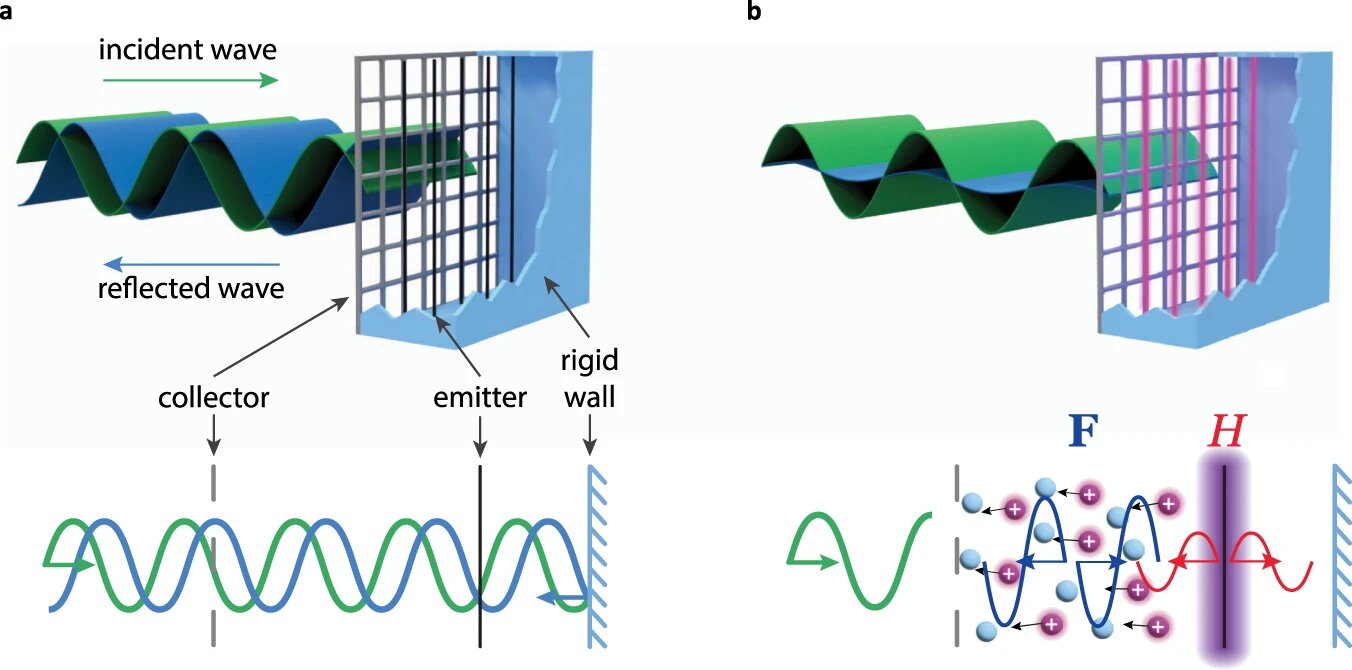A group of scientists from École Polytechnique Fédérale de Lausanne (EPFL) has built a demonstration of the plasma transducer, which is a set of parallel wires that can ionize air particles to create a loudspeaker. They have come up with a new concept called the active “plasmacoustic metalayer” that can cancel out noise. The scientists have published their results in Nature Communications.
Plasma Loudspeaker Concept and Noise Reduction
EPFL scientists have built a demonstration of the plasma transducer to reduce noise. This technology gets rid of the membrane, which is the most crucial part of conventional loudspeakers. Loudspeakers equipped with membranes, like the ones in your car or at home, are some of the most widely used solutions for active noise reduction. The problem with using the conventional loudspeaker as a sound absorber is that its membrane limits the frequency range of operation. The membrane vibrates mechanically to cancel out the sound waves in the air. The fact that the membrane is relatively heavy limits its ability to interact efficiently with fast-changing sounds or at high frequencies.
The EPFL scientists were intrigued by the idea of using plasma to reduce noise. They first ionize the thin layer of air between the electrodes that they call a plasmacoustic metalayer. The same air particles, now electrically charged, can instantly respond to external electrical field commands and effectively interact with sound vibrations in the air around the device to cancel them out. The communication between the electrical control system of the plasma and the acoustic environment is much faster than with a membrane.
The plasma is efficient at high frequencies and versatile since it can be tuned to work at low frequencies as well. The dynamics of thin layers of air plasma can be controlled to interact with sound over deep-subwavelength distances to actively respond to noise and cancel it out over a broad bandwidth. The fact that their device is active is key, since passive noise reduction technologies are limited in the band of frequencies that can be controlled.
The plasma absorber is also more compact than most conventional solutions. Exploiting the unique physics of plasmacoustic metalayers, the scientists experimentally demonstrate perfect sound absorption. They show tunable acoustic reflection from several Hz to the kHz range, with transparent plasma layers of thicknesses down to only a thousandth of a given wavelength, much smaller than conventional noise reduction solutions.
The plasma layer would only need to be 17 mm thick to absorb the noise, whereas most conventional noise reduction solutions, like absorbing walls, would need to be at least 4 m thick which often limits its feasibility. EPFL has partnered with Sonexos SA, a Swiss-based audio technology company, to develop cutting-edge active sound absorbers that use the plasmacoustic metalayer concept. Together, they aim to provide novel and efficient solutions for reducing noise in a wide range of applications, including the automotive, consumer, commercial, and industrial sectors.
The plasma loudspeaker concept is not new, but EPFL scientists have built a demonstration of the plasma transducer to reduce noise. They came up with a new concept called the active “plasmacoustic metalayer” that can cancel out noise. The scientists show that the dynamics of thin layers of air plasma can be controlled to interact with sound over deep-subwavelength distances to actively respond to noise and cancel it out over a broad bandwidth. The plasma absorber is also more compact than most conventional solutions. EPFL has partnered with Sonexos SA, a Swiss-based audio technology company, to develop cutting-edge active sound absorbers that use the plasmacoustic metalayer concept. Together, they aim to provide novel and efficient solutions for reducing noise in a wide range of applications, including the automotive, consumer, commercial, and industrial sectors.


Leave a Reply